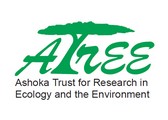Any and all opinions expressed in this newsletter are solely those of the author(s) and do not reflect the opinion of ATREE.
Centre for Excellence in Conservation Science
Royal Enclave,Srirampura,Jakkur Post
Bangalore-560064
Telephone: 080-23635555 (EPABX)
Fax : 080- 23530070
Come the month of December, the wetlands or more appropriately the tanks, both big and small in Tamiraparani basin is teeming with birds which come from far and near. When you drive around the area in April - you could see people fishing and sometimes truck loads of fishes leaving these wetlands. During other times of the year, you could see lotus and lily leaves being harvested. Even the sediment enriched tank bed soil is collected as it is high in nutrients and organic matter which can be used in their paddy fields. This reflects the multi-functionality of these wetlands in the landscape as well as the multiple stakeholders dependency. Many of these tanks have long history and date back to the 4th and 5th century A.D, when they were constructed by local landlords and maintained by the community. With socio- political change and with the advent of the new rulers, many of these tanks were not maintained. After independence largereservoir based irrigation canals emerged and the command area of Tamiraparani expanded and many of these tanks which were not part of this network got further neglected. Today Tirunelveli boasts of 2500 wetlands of which 1222 are managed by Public Works Department and fed by irrigation channels. Other tanks which are vested with the Panchayats are all rainfed. The full potential of these unique human-made ecosystems are not realized due to poor maintenance, encroachment and many of them have been put to alternate use by both state and private constituents. Just to highlight a few, Tirunelveli bus stand today sits on Vendhankulam which was once a beautiful wetland, and Nainarkulam in the heart of the town is a repository of town's sewage. At the backyard of ACCC, we have been a witness to the shrinkage of several ‘kulams’ by encroaching paddy fields. I leafed through various framework policies and conventions with a hope to see if these could help rejuvenate the ponds particularly the rain-fed ones. I started with Ramsar Conventions for Wetlands in which India is a member of contracting parties, the Notification on Regulatory Framework for Wetlands Conservation (RFWC) and the Draft National Water Policy (DNWP) launched by Ministry of Water resources. I also read through the scholarly engagements of my colleagues at ATREE on both these pieces of legislations. Firstly, most of these wetlands may not meet the depth and area requirement prescribed by Ramsar or RFWC. ATREE had identified an important shortcoming in RFWC which I quote here Irrespective of the size, a wetland that perform critical ecological/biodiversity functions e.g harbouring critical population of endangered species need to be included under the category A (high priority) of Ramsar”. This specifically applies to wetlands in the Tamiraparani basin where a network of small wetlands supported populations of threatened birds like pelicans and painted storks. Birds now appear to be in quasi equilibrium' in the region tracking water levels of these small wetlands which are distributed in staggered fashion to various regions starting from North to South. Secondly, both DNWP and RFWC hints at centralizing tendency of wetland and water management to meet their criteria. This approach is antithetical to the current mood of decentralized governance of natural resources in the country. In any case, about 84 % or 1263 rainfed tanks today are with Panchayats but there appears to be a general tendency of apathy and withdrawal towards these tanks as compared to the network managed by PWD. There are models where NGO like 'The Foundation of Ecological Security' (FES) has intervened and built capacity of local Panchayats on watershed management. A large cluster of villagers and Panchayats have been able to effectively improve the natural resources of the area using sources from National Rural Employment Guarantee Act of Govt. of India. Various village level sub-committees such as tank-users can be nested under Panchayats for effective management. Perhaps this model may be a one of the pathways to rejuvenate 'orphaned tanks'. Other tanks which are potential heronries can be identified as Biodiversity Heritage Sites under the biodiversity act or as ‘Community Reserve’ under the wildlife protection act which will again ensure multi-functionality of the wetlands reconciling conservation and use by the community.
Editorial Team
Editor: Allwin Jesudasan
Associate editor: Rajkamal Goswami
Editorial Review: R. Ganesan, M. Soubadra Devy, T. Ganesh
Design and presentation: Kiran Salagame
A S H O K A T R U S T F O R R E S E A R C H I N E C O L O G Y A N D T H E E
N V I R O N M E N T
Constellations of small tanks in Tamiraparani: orphaned or adopted?
- M Soubadra Devy
If you have any suggestions or comments please let us know through the boxes below






